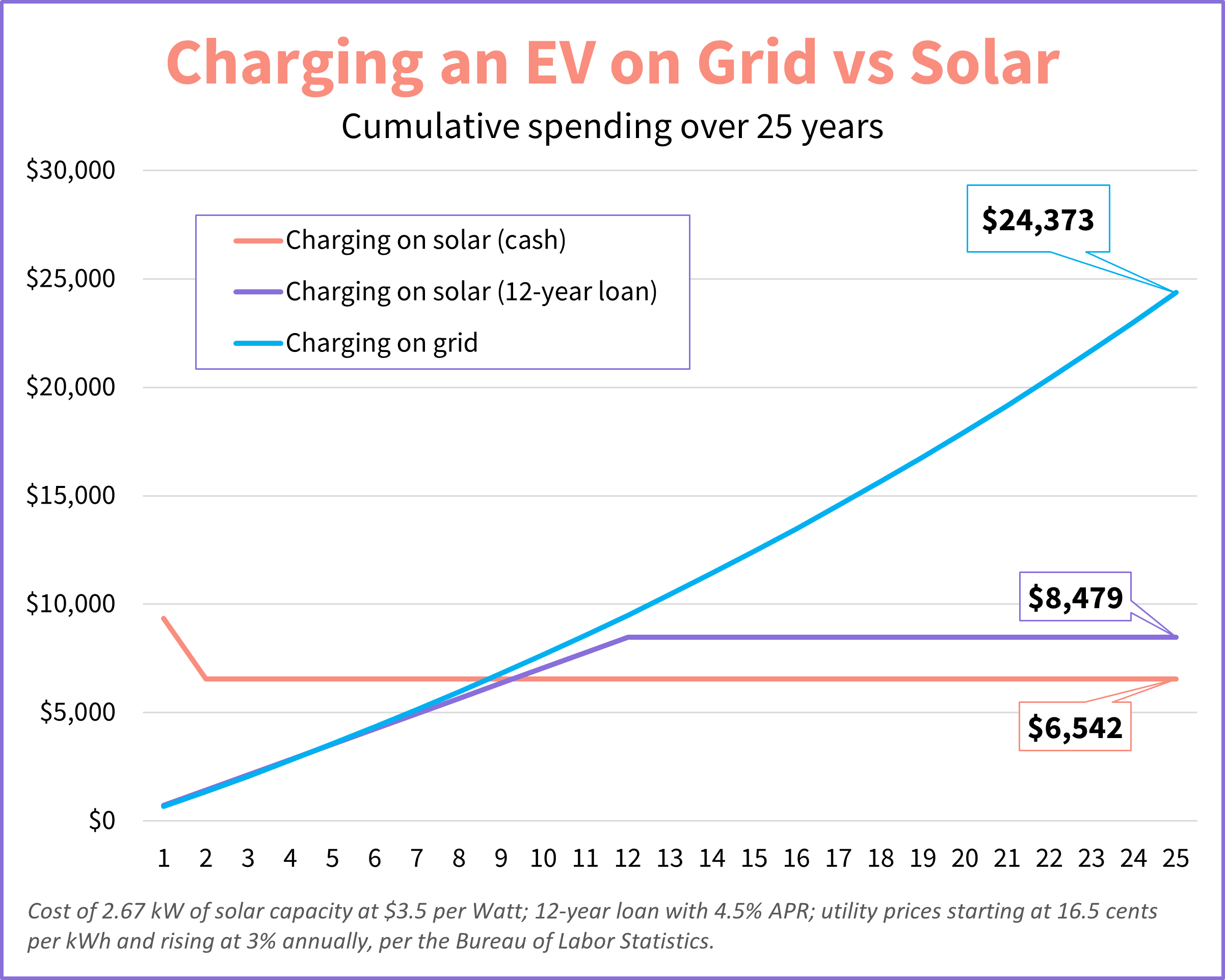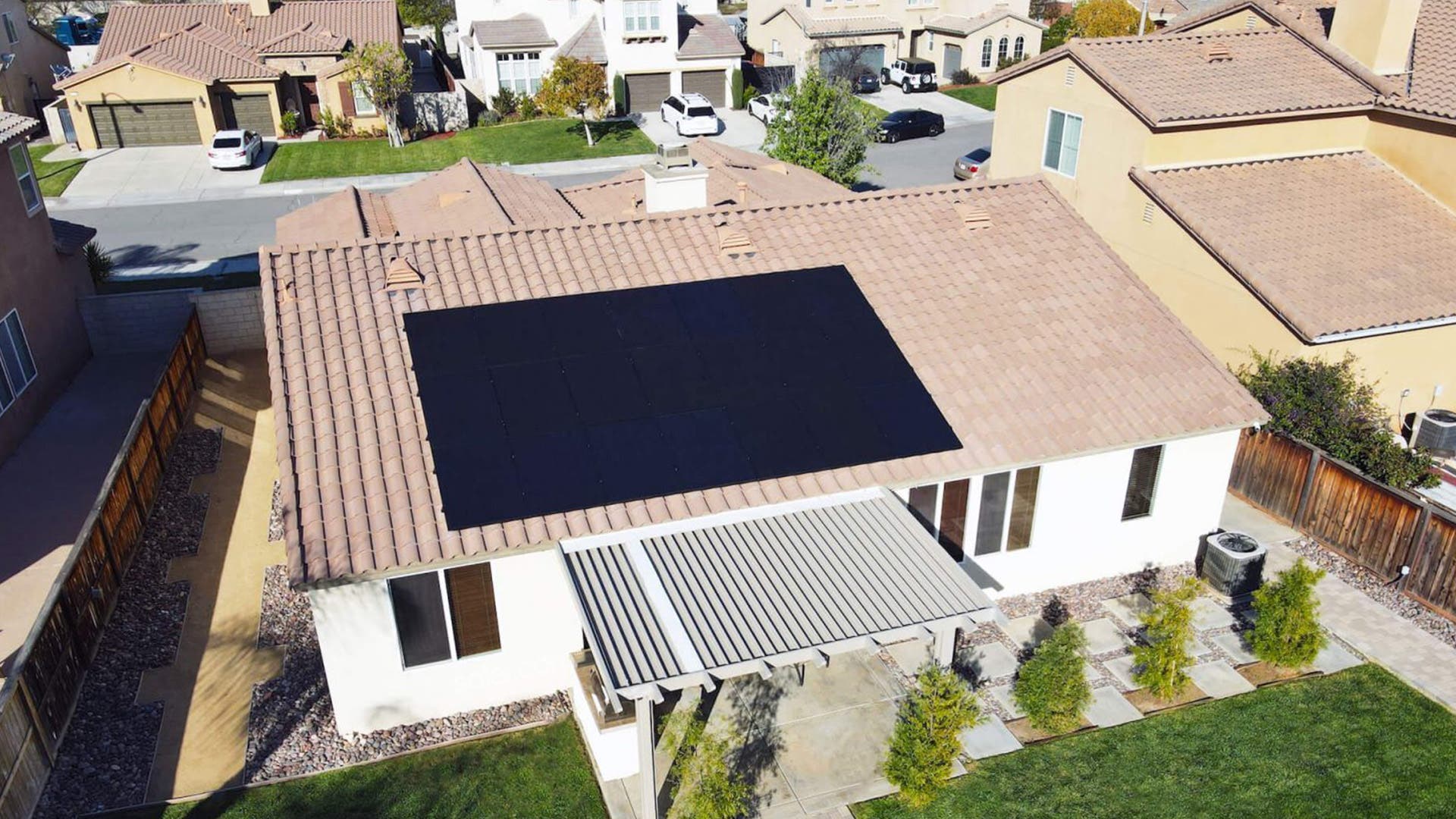How EV Drivers Can Save by Charging on Solar
The list of reasons to drive an electric vehicle is extensive. EVs are cleaner, quieter, and cheaper to operate than gas cars. They’re also punchy, intuitive, and just plain fun to drive.
But one major advantage that often goes overlooked is that EVs enable drivers to control their fuel costs by producing their own electricity with home solar, which has never – and will never – be an option for gas car drivers. Home charging is already a convenience specific to EVs, and it gets even better when paired with solar panels.
In this article, we’ll explore how many panels it takes to charge an EV and how much EV drivers can save by charging on home solar.
Compare quotes on home electrification upgrades like solar panels and EV charging.
Home Many Solar Panels Do You Need to Charge an Electric Car?
Before we can calculate the cost of home charging on solar versus grid electricity, we need a baseline of how many panels it takes to charge an EV.
That depends on three main factors:
- How much electricity the EV requires
- How much sun the house gets
- The power output of the panels
For this example, let’s pretend you drive a Hyundai IONIQ 5 for 37 miles per day (the average for American drivers). According to the US Department of Energy, the 2022 IONIQ 5 has a fuel economy rating of 30 kWh per 100 miles, which means you need 11.1 kWh of electricity to travel 37 miles.
So, how many panels does that take to produce? It depends on the amount of sun and the power output of the panels. The average number of peak sun hours per day ranges from 4-6 in America, so we’ll split the difference with 5.
11.1 kWh per day / 5 peak sun hours per day = 2.22 kW of production per hour
Next, we divide that by 83 percent to account for power loss while converting from DC electricity produced by the panels to AC used to charge an EV.
2.22 kW / .83 = 2.67 kW
So, the average driver needs 2.67 kW – or 2,670 Watts – of solar capacity to charge an IONIQ 5. We can divide that by 400W (the most common panel size) to get the number of panels.
2,670 W / 400 W panels = 6.675 panels
Since you can’t install partial panels, we’ll round up to 7 panels for the average driver to charge an IONIQ 5.
Of course, the number of panels required to charge an EV varies based on driving habits, sun exposure, and panel output; a Californian with a short commute will need fewer panels than a Michigander driving 50 miles a day.
In general, it takes somewhere between 3-10 panels to produce the electricity required to charge an EV. Now that we have a baseline, let’s see the cost difference between charging on solar and grid electricity. Need a charger for your IONIQ 5? Check out the Hyundai Home Marketplace.
How Much Can You Save by Charging Your EV With Solar?
Let’s say you have a Hyundai IONIQ 5 that you’ve been charging at home on grid electricity for the last six months. How much could you save by installing 2.67 kW of solar panel capacity to charge it?
At $3.5 per Watt, adding 2.76 kW of solar capacity would have a gross cost of $9,345, and a net cost of $6,542 after claiming the 30% federal solar tax credit. One way to look at going solar is buying electricity in bulk.
Instead of paying the ever-rising retail price for electricity, you pay a one-time sum of $6,542 to charge your EV(s) for the 25-year warrantied life of the panels.
Another way to look at it is reducing your electricity rate. Over 25 years, a 2.76 kW system can be expected to produce 93,230 kWh of electricity. If you divide the cost of the system by the lifetime production, you get a levelized rate of 7 cents per kWh.
$6,542 / 93,230 kWh = 7 cents per kWh
Given the national average electricity price of 16.5 cents per kWh, you’re basically paying half price for electricity to fuel your IONIQ 5. Over the life of the system, that adds up tens of thousands in electricity cost savings, likely spreading over several EVs.

Paying cash for the solar capacity offers the greatest opportunity for savings, although it can take 8-9 years to break even. On the other hand, taking out a solar loan offers slightly lower lifetime savings (due to interest payments), but allows for a quicker break-even point.
More Than Just Saving
While it’s always important to consider the bottom line, charging an EV on solar is about more than just energy cost savings. Home solar is also the cleanest way to charge an EV, as most utility providers still rely heavily on fossil fuels to generate electricity.
That’s not to mention that rooftop solar requires zero extra land and provides a built-in response when your cousin Todd tries to tell you that EVs aren’t worth it because they’re charged on coal power.
Above all, charging on solar gives you control of your fuel costs. It’s up to you whether you buy seven panels to cut your electricity rate to 7 cents per kWh, or four panels to cut it to 10 cents per kWh. You control production, transmission and consumption of the fuel for your car – which is much more than any gas car driver can say.
This article is supported by Electrum and Solar.com.
Have a tip for CleanTechnica? Want to advertise? Want to suggest a guest for our CleanTech Talk podcast? Contact us here.
Latest CleanTechnica.TV Video

CleanTechnica uses affiliate links. See our policy here.



